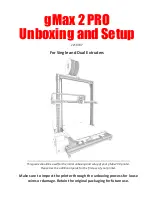
Programmers Guide
TH320/420
72
Moving data through the buffer
Applications should not let the buffer fill up with real time commands when the printer is busy at the RS-232c
interface. A busy condition at the RS-232c interface can be determined by bit 3 of the response to 1D 05, or
1D 04 1, or 10 04 1. The reason for a particular busy condition can be determined by other responses to
1D 04 n or 10 04 n.
Although the printer responds to real time commands when it is busy, it will place them into the buffer
behind any other data there, and flush them out in the order in which they were received. When the
printer is busy due simply to buffer full (that is, it can’t print data as fast as it can receive it), then data
continues to be processed out of the buffer at approximately print speed and the real time commands
will eventually get flushed out.
When the printer is busy due to an error condition, then data stops being processed to the buffer until
the condition clears one way or another. In either case, but more quickly in the case of an error
condition, the buffer can fill with real time commands.
When the DLE (0
×
10) sequences are being used, the last byte stored when the buffer fills up could be
the DLE (0
×
10) code, with no room for the subsequent EOT or ENQ. When this lone DLE (0x10) byte is
finally processed out of the buffer it will be interpreted as a clear printer command.
Similarly, when the GS (1D) sequences are being used, the last byte stored when the buffer fills up could
be the GS (1D) code, with no room for the subsequent EOT or ETX or ENQ. When this lone GS (1D) byte
is finally processed out of the buffer it will use the next byte, whatever it is, as the second byte in its GS
(1D) sequence.
To guard against this situation, the application must determine the cause of a busy condition and take
appropriate action or pace the real time commands to avoid filling the buffer. There is a minimum of 256
bytes available in the printer’s buffer when it goes busy.
Send Printer Software Version
ASCII
AX V
Hexadecimal
1F 56
Decimal
31 86
The printer returns 8 bytes containing the boot and flash software version. The first 4 bytes returned
are an ASCII string for the boot version.
The second 4 bytes are an ASCII string for the flash version.
Example: For 1.234.56 (8 bytes), the boot version is 1.23 and the flash version is 4.56.
Summary of Contents for TH320
Page 1: ...TH320 TH420 Two Color Thermal Impact Hybrid Printer Programmers Guide ...
Page 75: ...TH320 TH420 Programmers Guide 67 ...
Page 121: ...TH320 TH420 Programmers Guide 113 Character Sets Character code 437 USA Standard Europe ...
Page 122: ...Programmers Guide TH320 420 114 Codepage 737 Greek ...
Page 123: ...TH320 TH420 Programmers Guide 115 Codepage 850 Multilingual ...
Page 124: ...Programmers Guide TH320 420 116 Codepage 852 Slavic ...
Page 125: ...TH320 TH420 Programmers Guide 117 Codepage 857 Turkish ...
Page 126: ...Programmers Guide TH320 420 118 Codepage 858 with Euro symbol ...
Page 127: ...TH320 TH420 Programmers Guide 119 Codepage 860 Portuguese ...
Page 128: ...Programmers Guide TH320 420 120 Codepage 862 Hebrew ...
Page 129: ...TH320 TH420 Programmers Guide 121 Codepage 863 French Canadian ...
Page 130: ...Programmers Guide TH320 420 122 Codepage 865 Nordic ...
Page 131: ...TH320 TH420 Programmers Guide 123 Codepage 866 Cyrillic ...
Page 132: ...Programmers Guide TH320 420 124 Codepage 1252 Windows Latin 1 ...
Page 134: ...Programmers Guide TH320 420 126 Codepage 1255 Hebrew ...
Page 142: ...Programmers Guide TH320 420 134 TH420 Additional Features ...
Page 156: ......
Page 157: ...TH320 TH420 Programmers Guide Wincor Nixdorf International GmbH D 33094 Paderborn ...
















































